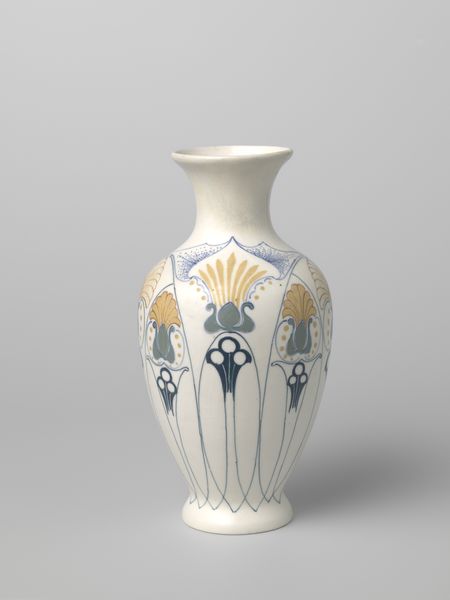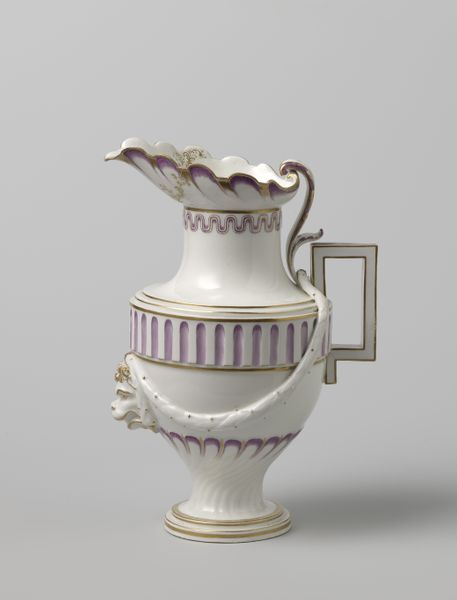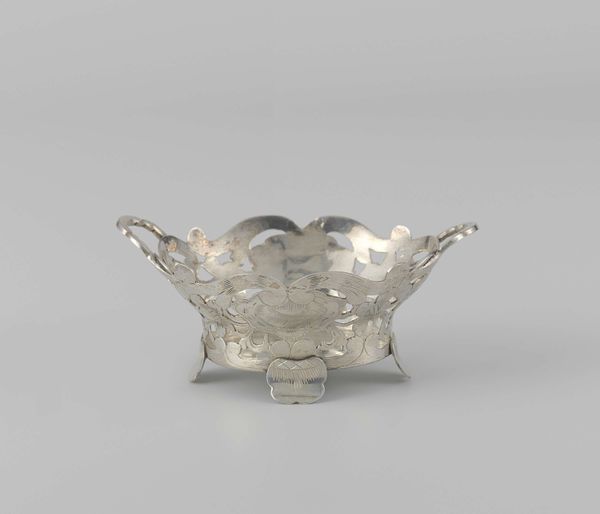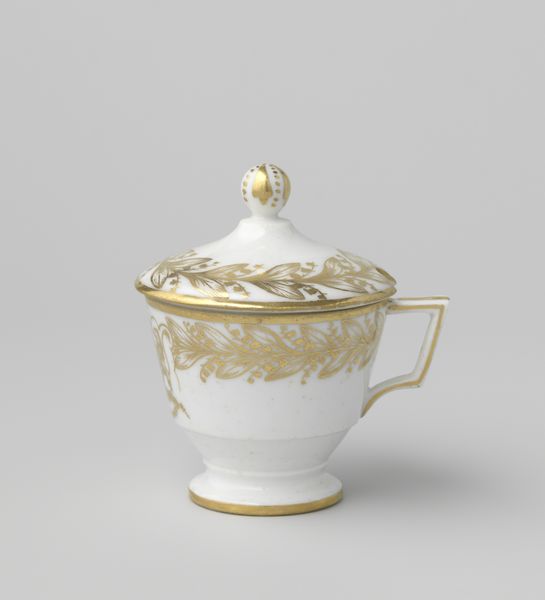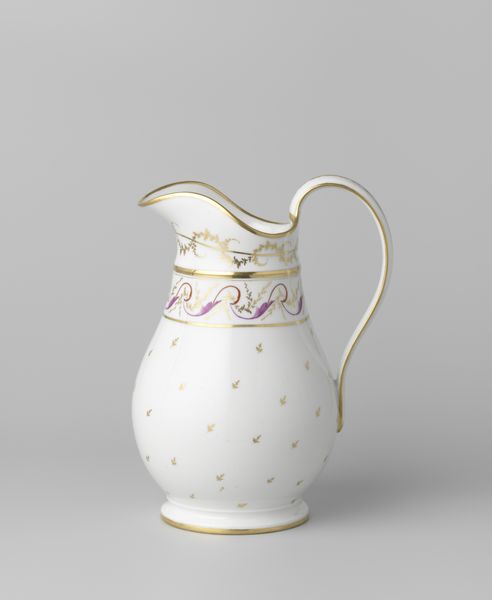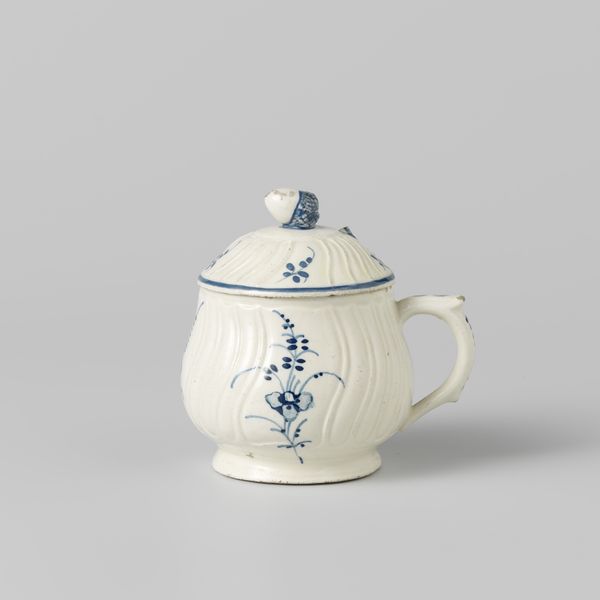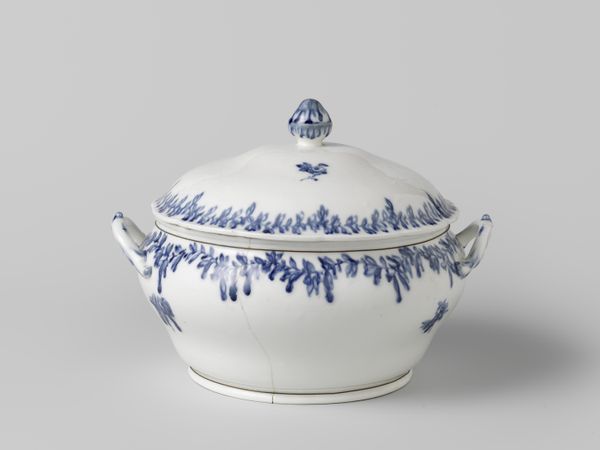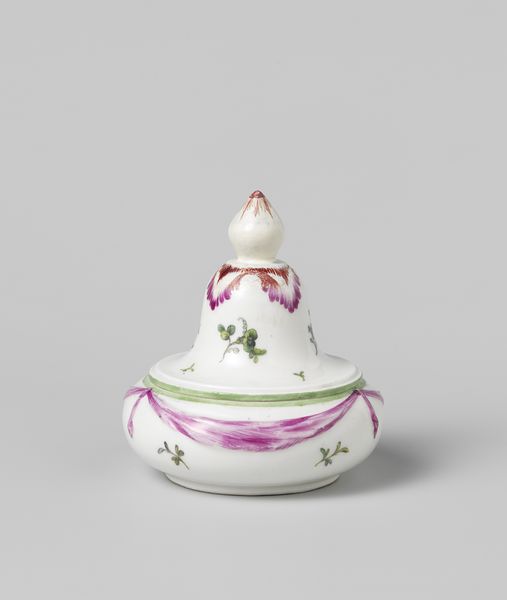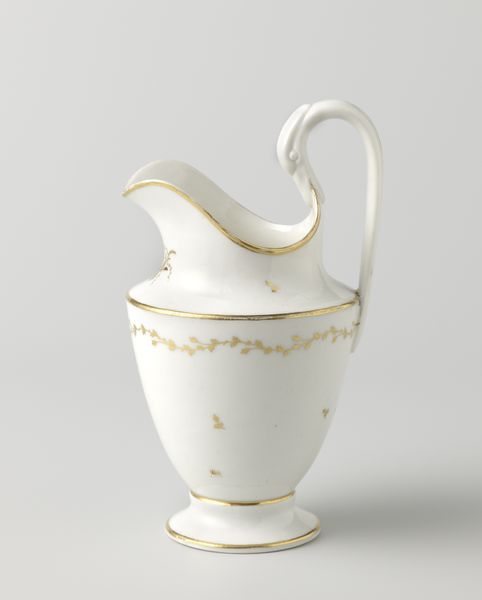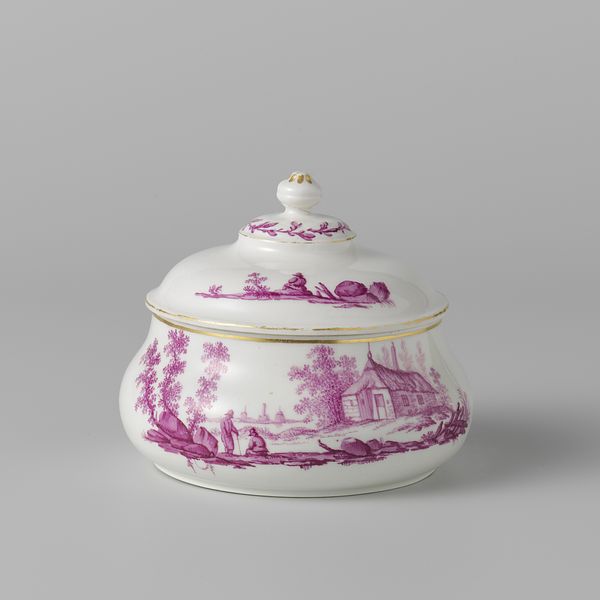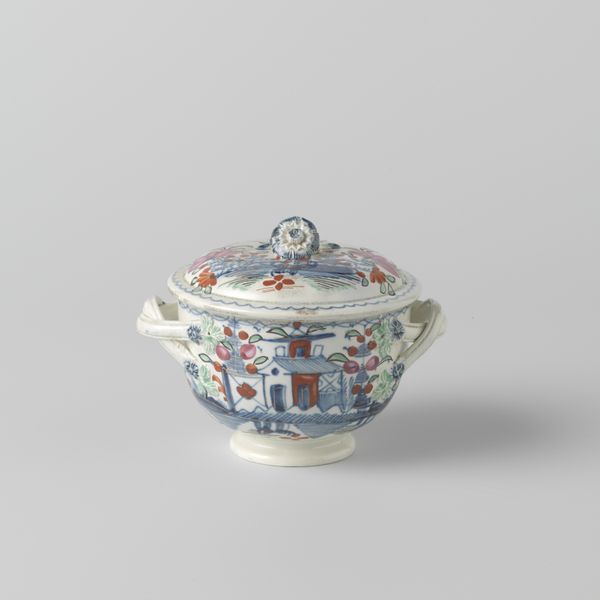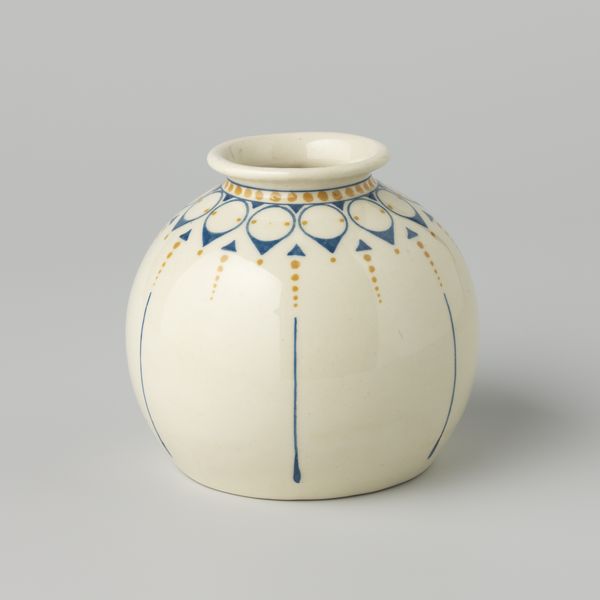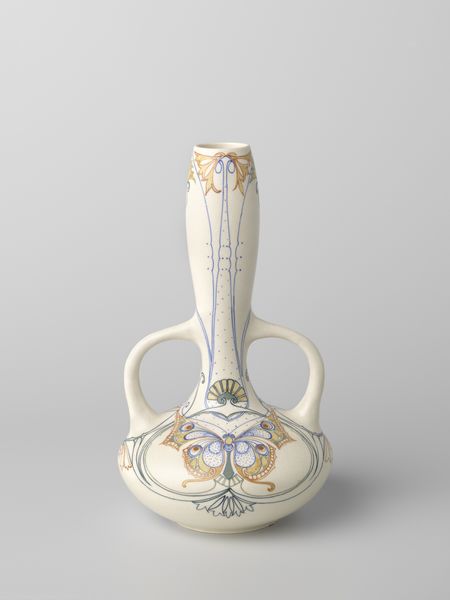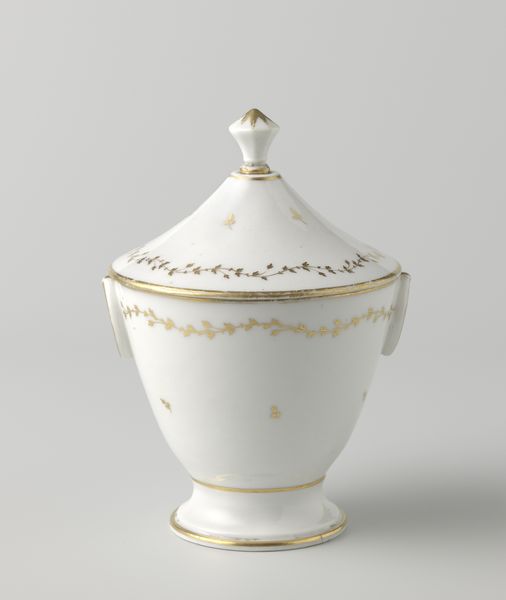
ceramic, earthenware
#
dutch-golden-age
#
ceramic
#
earthenware
#
stoneware
#
ceramic
#
decorative-art
Dimensions: width 12 cm, depth 10.7 cm, height 3 cm
Copyright: Rijks Museum: Open Domain
Editor: Here we have an earthenware piece titled "Oesterschelp", or Oyster Shell, made in Loosdrecht, sometime between 1778 and 1782. I'm immediately drawn to the almost austere simplicity of the design – the stark white and blue palette, and the delicate floral motif in the center. What do you make of it? Curator: It's fascinating how the form itself, mimicking a natural object, dictates the artistic choices. Note the radiating lines, subtly emphasizing the shell's natural structure. The cobalt blue decoration isn't merely ornamentation, it’s a formal counterpoint. How does the placement of the central motif relate to the overall shape? Editor: Well, it anchors the design, doesn't it? It's centered, drawing the eye inward and balancing the radiating lines of the shell form. And the small blue dashes along the edge echo that radial pattern. Curator: Precisely. It's an exercise in controlled decoration. The floral element, stylized as it is, adds a layer of complexity. Are we looking at a literal depiction, or something more symbolic? Is it merely decorative or structurally integral? Editor: I hadn’t thought about it like that. Maybe it is less about botanical accuracy and more about fitting a natural motif into an artificially made, natural form. Curator: Precisely. The semiotics suggest that, while representing the natural, the arrangement reflects a structured perspective. It speaks volumes about artistic interpretation and structural representation. Editor: I see, thank you!
Comments
No comments
Be the first to comment and join the conversation on the ultimate creative platform.
